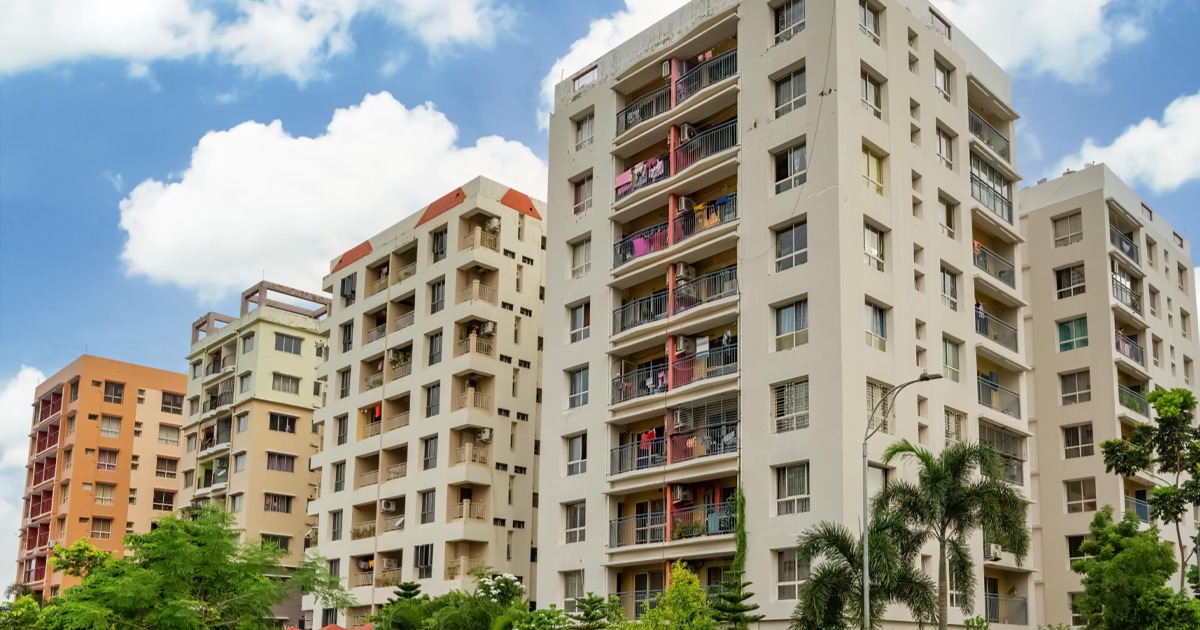Real estate prices: Bengaluru sees a 24% increase in house costs, while Delhi-NCR sees a 30% YoY surge
By Bricksnwall | 2024-12-02

The average price of homes in eight major cities
increased 11% year over year. Delhi NCR saw the most YoY growth at over 30%,
followed by Bengaluru at 24%.
Due to strong demand and optimistic market
sentiments, the average price of a home in India's top eight markets rose 11%
year over year to ₹11,000 per square foot in Q3 2024. The largest YoY increase
was 32% in Delhi-NCR, followed by 24% in Bengaluru, according to the
Colliers-Liases Foras Housing Price Tracker for Q3 2024.
Ahmedabad, Bengaluru, Chennai, Delhi-NCR,
Hyderabad, Kolkata, MMR, and Pune are among the eight cities.
Delhi NCR's home prices rose 32% year over year,
the largest increase among major cities, driven by the introduction of a few
high-profile projects in the luxury and ultra-luxury market. It stated that
Dwarka Motorway and Golf Course Extension/Sohna Road in Delhi NCR saw a notable
price increase of more than 50% year over year, which resulted in a steep
increase in average home costs overall.
Average home prices in the area have increased by
over 75% since the beginning of the epidemic in 2020, driven primarily by
strong growth in the luxury market and ongoing desire for larger, more roomy
homes.
For the fifteenth consecutive quarter since 2021,
average home prices have risen. Following two years of record-breaking sales,
the demand momentum in the major cities is levelling off. However, it stated
that 2024 is expected to conclude well due to the expectation of robust
residential activity in the last quarter.
Price momentum is expected to last until 2025.
Positive feelings among homebuyers and the
extremely favourable conditions of the real estate market are further supported
by the continuous increase in housing prices. As ambitious purchasers become
more prevalent, larger homes are being built, which is also driving up costs as
homes continue to grow in size. This is a true reflection of the state of the
market and customer preferences. We are optimistic about rate decreases in the
near future and anticipate that this strong momentum will continue into the new
year," stated Boman Irani, president of CREDAI National.
The outlook for the residential segment is still
favourable due to solid underlying market fundamentals, even though the housing
market is gradually stabilising. By providing compact size units, developers
are readjusting their strategy, especially in the price-sensitive areas.
"The expected easing of monetary policy and anticipated repo rate cuts can
potentially bring financial relief to homebuyers in the near term, even though
average housing prices have continued to rise steadily, seeing an 11% YoY
growth during Q3 2024," stated Badal Yagnik, CEO of Colliers, India.
Over 10 lakh housing units remain unsold, with MMR holding the largest share.
Due to a robust uptake in dwelling units, overall unsold inventory continued to decline quarterly for the third consecutive quarter. Over 10 lakh housing units remained unsold in the eight major cities as of the end of September 2024, with MMR making up the majority with a roughly 40% stake.
Notably, despite an annual increase of almost 28%,
unsold units in Hyderabad had a little decline on a sequential basis.
Pune experienced the largest annual drop in unsold
inventory levels, at 13%. It's interesting to note that the city's inventory
levels dropped for the fifth time in a row.
Unsold inventory levels have decreased by 7-9% annually in Chennai and Kolkata as well. It's interesting to notice that, on a quarterly basis, unsold inventory levels decreased in seven of the eight cities.
Developers are becoming cautious with future releases due to the enormous amounts of unsold inventory that now exist in the eight major cities, totalling 10 lakh units. By evaluating and locating the right target market in areas with high demand, they are realigning their strategy. Developers have increased their offerings in the luxury and ultra-luxury classes, despite a slowdown in new launches in the affordable housing market. In locations like Bengaluru and Delhi NCR, the average cost of housing for large living units, especially 3–4 BHK configurations, rose by up to 26% year over year in Q3 2024, according to Vimal Nadar, Senior Director and Head of Research at Colliers India.
Source: Hindustan Times







